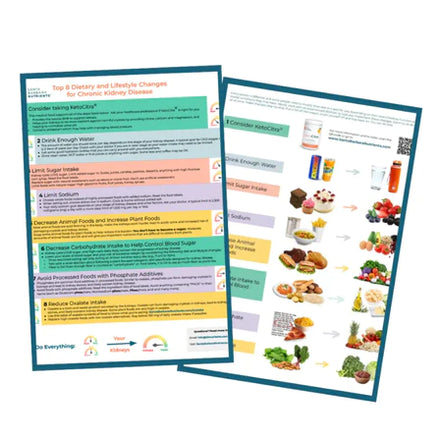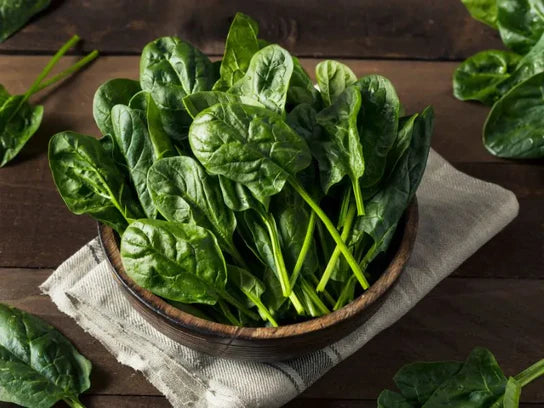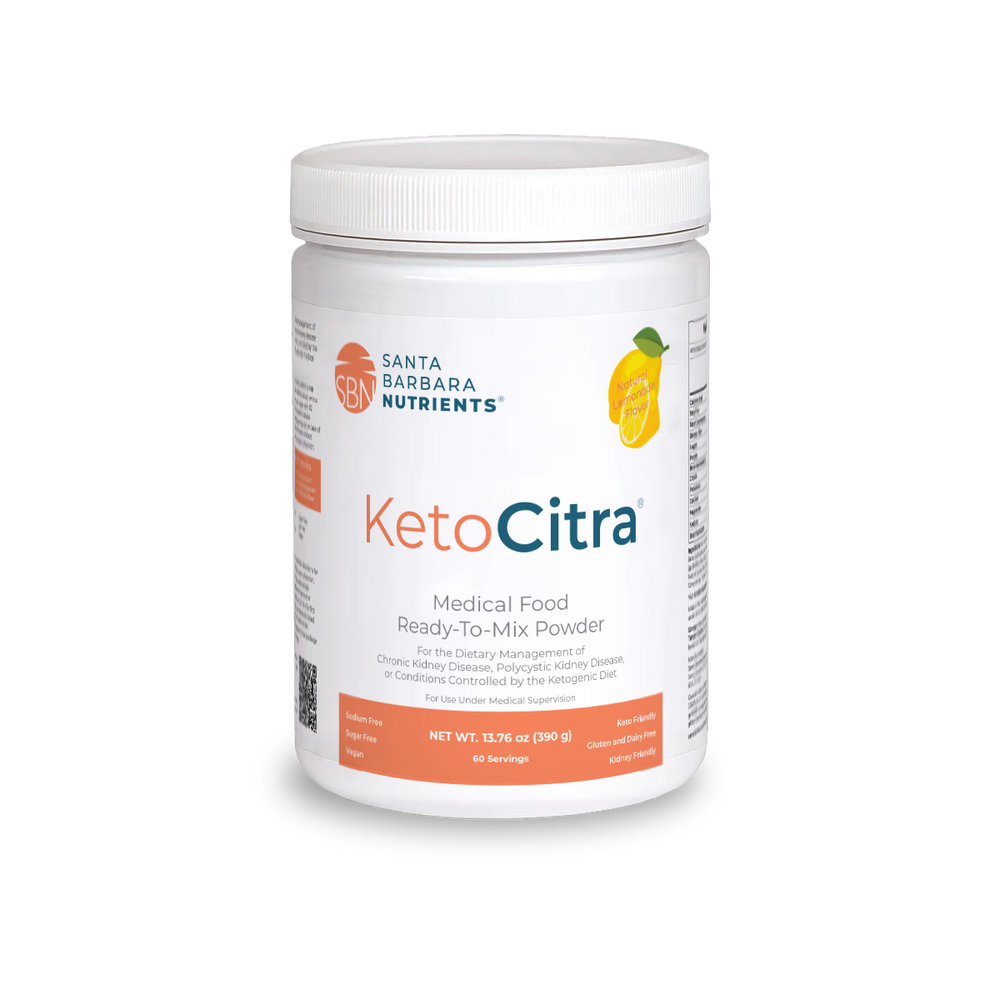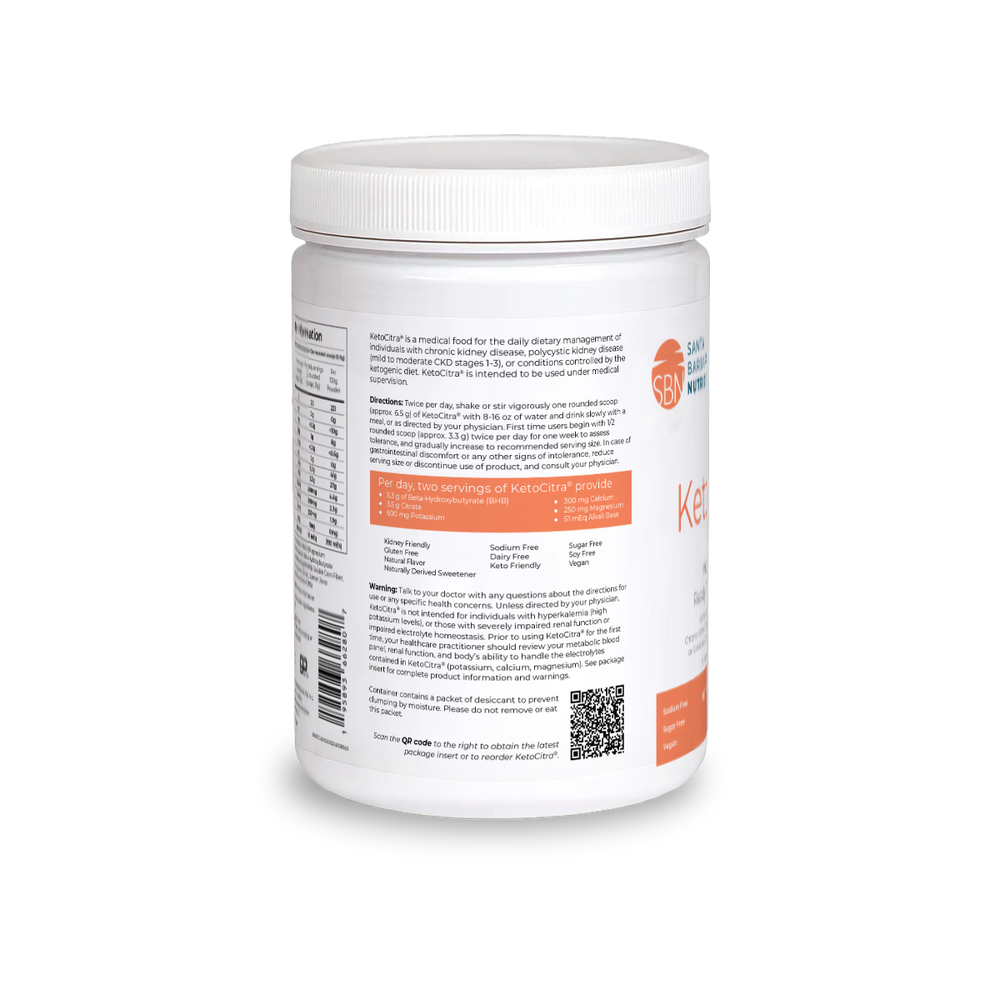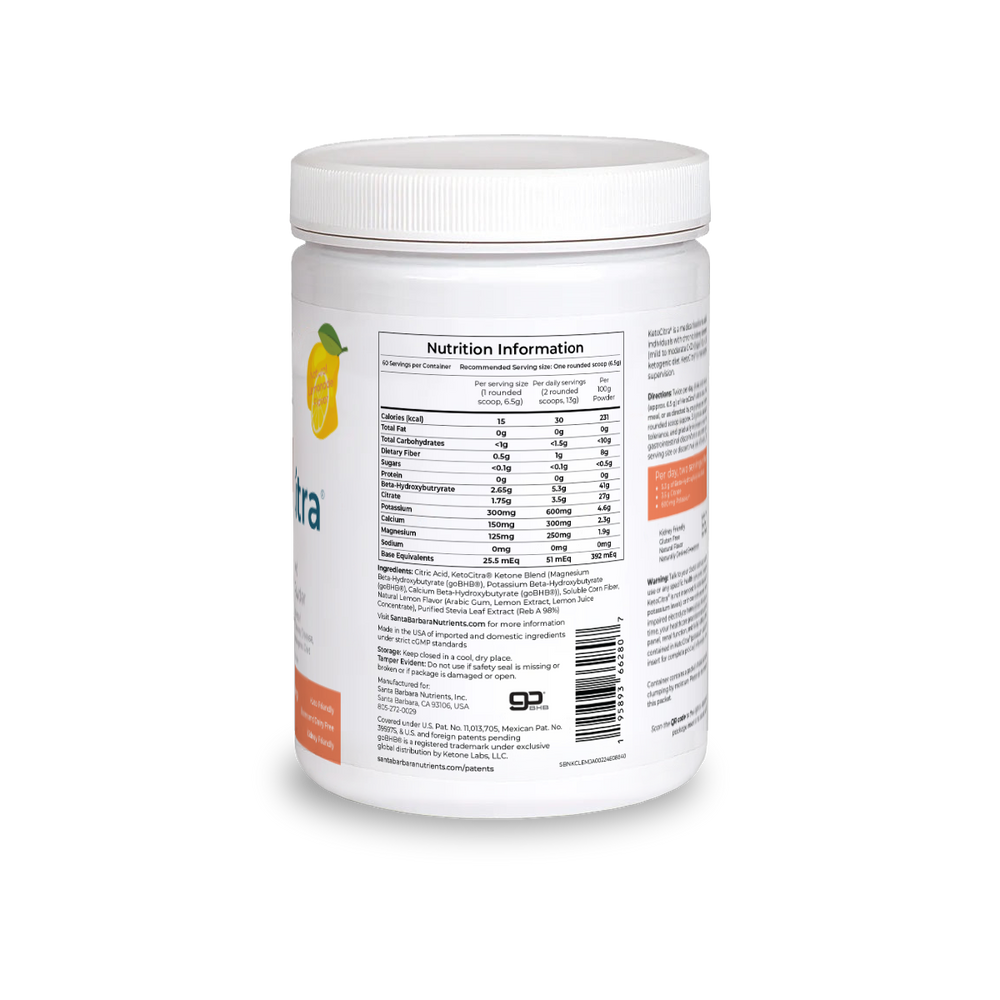Diabetic kidney disease, sometimes abbreviated as DKD and often spoken of as Chronic Kidney Disease (CKD) is a kidney-related complication that can arise due to diabetes. It’s a top reason why people experience kidney issues. Approximately one in three adults living with diabetes has kidney disease. KetoCitra helps your kidneys to maintain their natural resilience preventing the formation of micro-crystals and kidney stones. KetoCitra is formulated to assist in your dietary efforts to slow diseasse progression.
KetoCitra®.
KetoCitra® is the FIRST and ONLY non-prescription product specifically designed for the dietary management of chronic kidney disease (including the genetic form polycystic kidney disease)
It is designed for stages 1-3, however KetoCitra® may still be appropriate for individuals with stages 4 or 5, but this should be determined by your health care practitioner.
Learn More
